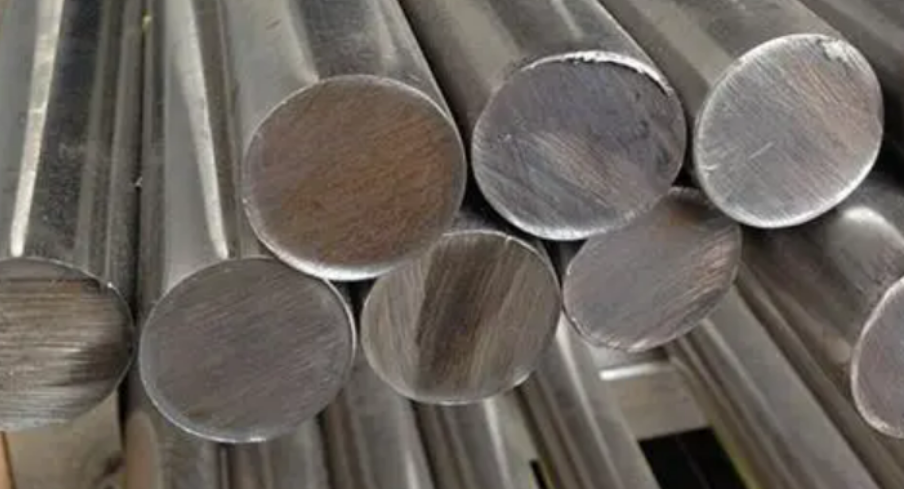Among the various grades of tool steel, S5 and S7 stand out for their unique properties and applications. Both S5 and S7 are air-hardening grades of steel, meaning they have the ability to harden when exposed to air after being heated to a critical temperature. However, they differ significantly in many aspects. So, S5 vs S7 tool steel – what’s the difference? In this blog post, let’s delve into the details of these two grades to understand their distinctions.

S5 vs S7 Tool Steel – What’s the Difference?
S5 vs S7 Tool Steel – 1. Composition:
The primary difference between S5 and S7 tool steel lies in their alloy composition. S5 tool steel, also known as 52100 steel, is a high-carbon, chromium-based alloy. It contains approximately 1.0-1.1% carbon, 1.3-1.6% chromium, and small amounts of manganese and silicon. This composition gives S5 steel its high hardness and wear resistance, making it suitable for demanding cutting and wear applications.
On the other hand, S7 tool steel, also known as A2 steel, is a chromium-molybdenum-vanadium alloy steel. It has a similar carbon content to S5 steel (0.9-1.0%) but also includes molybdenum (0.4-0.6%) and vanadium (0.15-0.30%) as alloying elements. The addition of molybdenum improves the steel’s hot hardness and resistance to tempering, while vanadium enhances carbide formation and wear resistance.
S5 vs S7 Tool Steel – 2. Heat Treatment:
Both S5 and S7 tool steel require heat treatment to achieve their desired mechanical properties. S5 steel can be heat-treated to a maximum hardness of around Rockwell C 62-64, while S7 steel can achieve a hardness of up to Rockwell C 63-65.
However, the heat treatment process differs slightly between the two grades. S5 steel is typically quenched in oil or water and then tempered to relieve internal stresses and improve toughness. S7 steel, on the other hand, is quenched in oil and then subjected to a double tempering process to optimize hardness and toughness.
S5 vs S7 Tool Steel – 3. Mechanical Properties:
Due to their different compositions and heat treatment processes, S5 and S7 tool steel exhibit distinct mechanical properties. S5 steel offers excellent wear resistance, hardness, and abrasion resistance, making it ideal for high-speed cutting and wear-resistant applications. It also has good toughness and impact resistance, allowing it to withstand sudden impacts without breaking or chipping.
S7 steel, on the other hand, offers a combination of high hardness, wear resistance, and hot hardness. The addition of molybdenum and vanadium in S7 steel improves its resistance to thermal softening at elevated temperatures, making it suitable for high-temperature machining and cutting applications. Additionally, S7 steel has good dimensional stability and resistance to deformation during heat treatment.
S5 vs S7 Tool Steel – 4. Applications:
The unique properties of S5 and S7 tool steel make them suitable for different applications. S5 steel is widely used in the manufacture of bearing races, punches, dies, cutting tools, and other components that require high wear resistance and hardness. It’s also commonly found in high-precision machining operations where dimensional stability and durability are crucial.
S7 steel, on the other hand, is ideal for applications that involve high temperatures and severe wear conditions. It’s commonly used in the manufacture of hot work tools, such as hot cutting and forming tools, hot rolls, and dies for metal extrusion. The combination of high hardness, wear resistance, and hot hardness in S7 steel allows it to maintain its performance even under extreme conditions.
Conclusion
In conclusion, the primary differences between S5 and S7 tool steel lie in their composition, heat treatment, mechanical properties, and applications. S5 steel offers excellent wear resistance, hardness, and impact resistance, making it suitable for high-precision machining and wear-resistant applications. S7 steel, on the other hand, offers a combination of high hardness, wear resistance, and hot hardness, making it ideal for high-temperature machining and cutting applications.
Thank you for reading our article and we hope it can help you to have a better understanding of the differences between S5 vs S7 Tool Steel. If you are looking for S5 and S7 Tool Steel suppliers online now, please don’t hesitate to contact Huaxia Steel.
As a leading suppliers of tool steel products from Shanghai, China, Huaxia Steel provides customers with high-quality tool steel, alloy steel, carbon steel, carbon steel tubes, and carbon steel pipes at a very competitive price.







